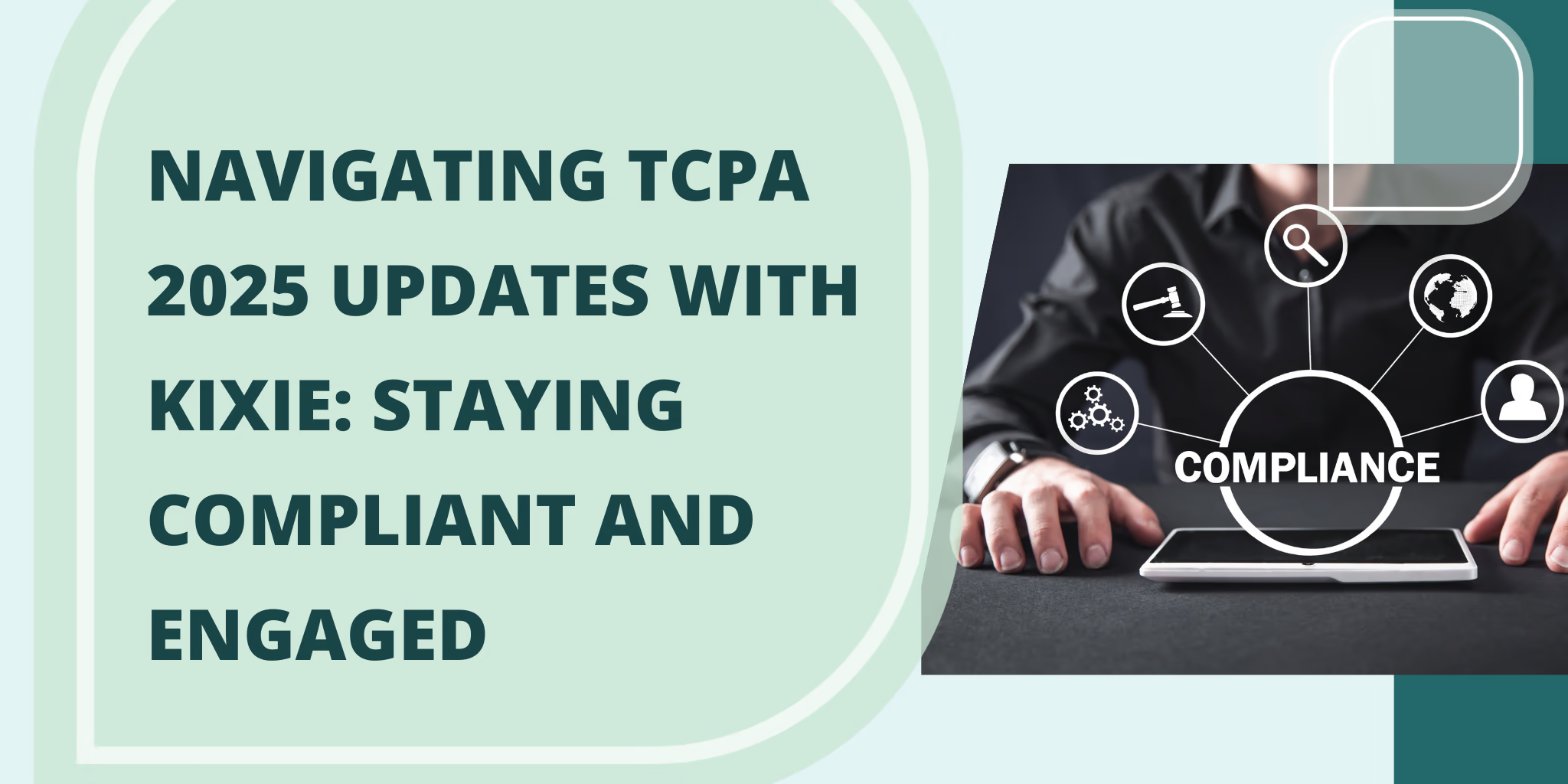The Telephone Consumer Protection Act (TCPA) has always been crucial for safeguarding consumers against unwanted telemarketing calls, texts, and faxes. In 2025, significant updates are coming into effect, emphasizing greater consumer control, especially regarding consent and how it’s revoked. If your business relies on outbound calling or texting, understanding these changes is essential to avoid costly penalties and maintain customer trust.
Key TCPA Updates You Need to Know
Flexible Consent Revocation
Starting April 11, 2025, customers can revoke consent through any “reasonable” method—like texting back “stop” or verbally requesting removal. This change means you can’t limit how customers opt out. You must honor opt-outs within just 10 business days, making quick and efficient systems essential.
Immediate Opt-Out Confirmation
When a customer opts out, you can send only one confirmation message, and it must go out within five minutes. This message can’t include promotional content—it should simply confirm the successful opt-out.
Automated Opt-Out for Robocalls
Calls using pre-recorded or AI-generated voices must now offer immediate automated opt-out options during the call itself, letting customers easily stop unwanted interactions right away.
Understanding the One-to-One Consent Rule (and Why It Matters)
Although the “one-to-one consent rule”—which required separate consent for each business contact—was vacated by the Eleventh Circuit Court, it’s still wise to consider this as a best practice. Regulators may revisit similar measures in the future, so adopting precise consent practices now can help protect your business down the road.
Common Compliance Challenges and How to Solve Them
Keeping Up with Regulatory Changes
TCPA regulations evolve frequently. Stay ahead by dedicating resources to monitor updates and swiftly adjusting your processes.
Clarifying Consent Requirements
Different communications require different levels of consent. Ensure your teams know when verbal consent is enough and when explicit written consent is mandatory.
Efficiently Processing Opt-Out Requests
The shorter 10-day opt-out processing window demands automation. Integrate your CRM and marketing tools to handle revocations seamlessly.
Managing Multi-Channel Opt-Outs
Customers who opt out of one communication type automatically opt out of all non-emergency communications. Sync your systems across all channels—voice, SMS, email—to respect customer preferences consistently.
Handling Reassigned Numbers
Regularly scrub contact lists against reassigned number databases to avoid contacting unintended recipients, ensuring compliance and customer satisfaction.
Overseeing Third-Party Vendors
You’re responsible for third-party compliance. Thoroughly vet vendors, clearly outline compliance requirements, and include indemnification clauses in your agreements.
Balancing Compliance with Effective Communication
View compliance as part of superior customer service. Transparent, respectful communication strengthens customer relationships and trust, even within stricter regulatory frameworks.
The High Cost of Non-Compliance
Non-compliance is expensive. Penalties range from $500 to $1,500 per violation and can quickly escalate. Additionally, class action lawsuits pose serious financial and reputational risks. Real-world cases illustrate just how costly TCPA violations can become.
Best Practices to Secure Consent and Stay Compliant
- Explicit Written Consent: Clearly document consent for all automated marketing communications.
- Clear Consent Language: Use straightforward terms so customers know exactly what they agree to.
- Detailed Record-Keeping: Maintain comprehensive consent records within a centralized CRM.
- Easy Opt-Out Options: Always offer simple, clear ways for customers to opt out.
- Regular Consent Audits: Frequently audit your consent management practices to catch issues early.
- Continuous Staff Training: Regularly train your teams on compliance standards and practices.
Leveraging Technology for Compliance
Technology can both help and hinder TCPA compliance. Use CRM and consent management platforms to manage customer preferences efficiently. However, be cautious with autodialers, predictive dialers, and ringless voicemail—ensure they’re configured correctly to avoid inadvertent violations.
Looking Beyond 2025: Preparing for Future Regulatory Trends
Expect more stringent regulations, particularly around AI-driven communications and caller ID authentication. Stay proactive by anticipating changes and aligning your practices accordingly.
Real-World Compliance Success Stories
Companies like Listrak, Luxury Presence, and Convoso have proactively adapted to TCPA updates, emphasizing explicit opt-ins, integrated compliance management, and robust consent tracking systems. Their success illustrates the importance of staying informed and responsive to regulatory changes.
Practical Tips for Training Your Sales Team
- Comprehensive Training: Cover all TCPA aspects, including recent updates and opt-out protocols.
- Script Adherence: Use scripts with proper disclosures and guidance for obtaining verbal consent.
- Consent Verification: Ensure sales reps verify proper consent before making contact.
- Opt-Out Handling: Stress timely and accurate opt-out processing across all channels.
- DNC List Awareness: Educate teams on checking national and internal Do Not Call lists.
- Time Zone Compliance: Train staff to call only during legally permissible hours.
- Role-Playing and Scenarios: Simulate real-world conversations to practice compliance.
- Regular Updates: Offer refresher courses to reinforce TCPA compliance knowledge.
- Compliance Audits: Review and coach based on real communication records.



